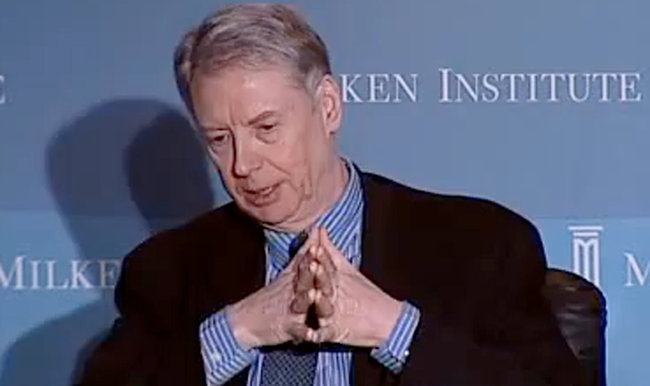The crisis in the Euro area started more than four years ago, when the banking crisis collided with the debt crisis and the crisis of competitiveness. Its dramatic stage, full of extraordinary night talks in Brussels, was replaced by a relatively calm phase. The beginning of this stage was marked by verbal, and later real, support for the Euro currency from the European Central Bank. Governments are trying to tame budget deficits, the immediate exit of Greece from the Eurozone is no longer on the agenda, and the financial market nervousness has disappeared. Prolonging this period of calm will inevitably bring the ever-increasing optimistic declarations that the worst is already past us. And when the media reported that the economies of some countries continued to grow modestly, talking about the end of the crisis has become a part of the official propaganda.
I understand the reason why such good news is being spread. The optimism is meant to become “contagious”, in the good sense of the word. It creates our expectations and dispels fears of the future to the extent that people start spending once again, businesses start investing and banks are lending; in other words, the wheels of the economic engine will spin again at full speed. The problem I see with this official optimism is that it is spread mostly by the same people who, before the crisis hit in 2007, not only did not have a clue about the approaching crisis, but even believed that a similar one could not come at all.
The people who saw the Euro project’s disastrous systemic deficiencies prior to its introduction into circulation were not many. And when they voiced their opinion, the forecasts were not only met with a lack of understanding from their colleagues, but even with hostile treatment. This also includes Bernard Connolly, the author of the Rotten Heart of Europe: the Dirty War for Europe’s Money published in 1995 at the height of preparations for the introduction of the Euro in the first countries. In retrospect, we can say that in his book, Connolly showed incredible clairvoyance when he predicted that the introduction of the monetary union will inevitably lead to a crisis, which in 2009 finally came. A peculiar irony was that at the time the book was published Connolly was a member of staff of the European Commission, where he focused on the monetary policy. His employer did not share his critical opinion on the Euro. In the same year he lost his job, and even before the termination of employment, he was denied access to the buildings of the European Commission. In his own words, even at the entrance there was a photograph of him, as if he were a criminal. European Court of Justice later backed the Commission up …
Connolly now works in the private sector, and the public hardly knows about him. The new edition of his book, however, was an opportunity to use the preface to summarize the fundamental causes of the crisis of the Euro area in hindsight. According to him, the crisis was caused by the very logic of the Eurozone and in some countries it initially caused a “bubble” and then was kept in a “straitjacket”. The solution is either to make the troubled countries exit the union, massively devaluate the Euro, or let Germany permanently finance the other countries by up to 10% of its GDP annually. The price for not solving the problems is another crisis in the future; a threat to democracy and peace in Europe. Certainly, there is no need to agree with everything Connolly says. However, when thinking about what awaits us in the Euro area in the coming months and years, I listen to his opinion with much more respect than to the opinions of the prophets of unfounded optimism.
Translated by: Peter Blaha and Martin Reguli



















No comments
Be the first one to leave a comment.